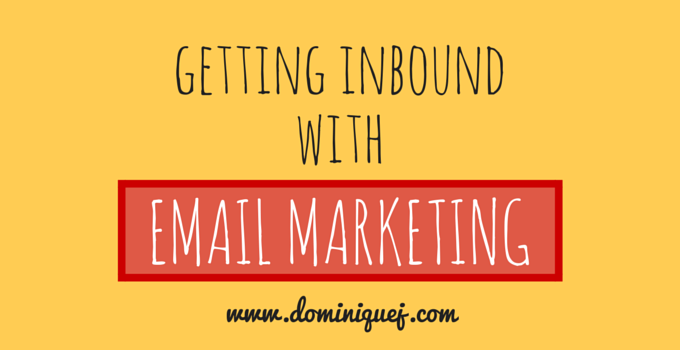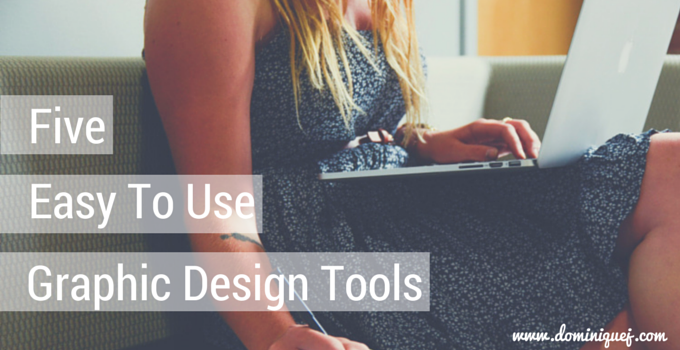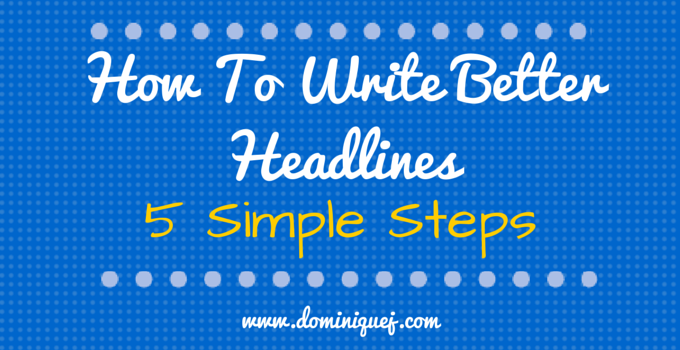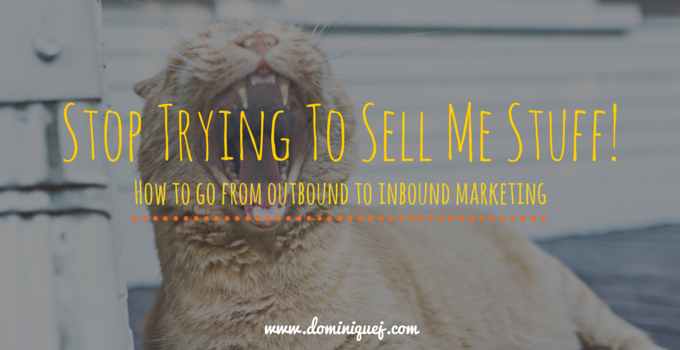
How To Go From Outbound To Inbound Marketing
Stop trying to sell me stuff!
This is the message that consumers have been sending to companies for years. Unfortunately, its been largely ignored, and advertisers and marketers continue to force their products and services down peoples’ throats. When’s the last time you saw someone ask to be shown ads? How often do you think promotional blog posts get read?
The old ways of disruptive, primarily outbound marketing techniques aren’t as effective as they used to be. Thanks to the internet, the way you find out about different products has changed, a lot. Don’t get me wrong, ads still have their place and serve a purpose, but at the right time and place. The right time and place doesn’t include:
- Filling up your Twitter stream with promotions
- Doing a bunch of self promotional blog posts
- Sending out daily “sales” emails
All three of these places (social, blogs, email) should be inbound focused. That means putting the needs of your audience first, and providing them with real value, not promotions.
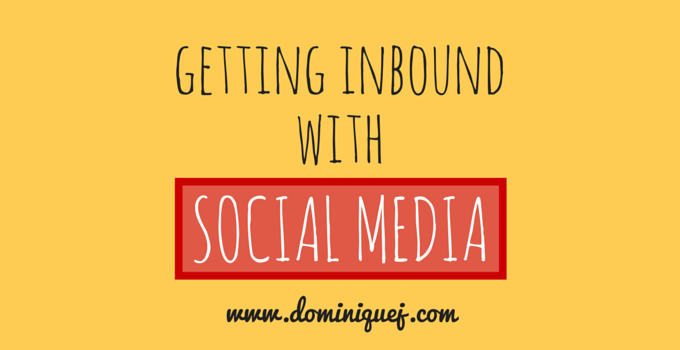
Getting Inbound With Social Media
Social media started out as a way for the everyday Joe to connect and communicate with friends, family, and people around the world who were interested in the same things. Whether we’re talking about Facebook, Twitter, Pinterest, or Google+, you’ll notice one thing every big social media site has in common: They don’t start out with advertising options at first.
Have you ever stopped and thought why? Because they know that people wouldn’t sign up if they knew they would be bombarded with ads every time they logged in. These sites all realize that people want the entertainment and social aspects of social networks. Nobody’s going to stop using Facebook because they stop showing ads.
The ads you’re running on Facebook, Twitter, and LinkedIn are distractions from what people actually come to the sites to do. The tweets you send out telling people about your new products aren’t what people are following you for (in most cases). Does that mean they’re ineffective? No. But what it does mean is that you need to stop thinking of social media as an advertising channel, and just a place to market your company.
The good thing is that going inbound with your social media marketing actually isn’t all that complicated. You just have to think about what your audience wants. It’s never about you, it’s about them. Make social media posts about content that’s helpful to your audience. I don’t care what industry you’re in, you can put out social media posts that your audience will find useful:
- Sandwich shop: Easy sandwich recipes
- Dentist: Dental care tips
- Hardware store: DIY projects
If you’re struggling to come up with ideas on what to post on your social profiles, just look at what your competitors are doing. There’s no shortage of things to tweet or post to Facebook about. You just have to shift the way you think and stop treating social media as an advertising platform, because that’s not their intended purpose.
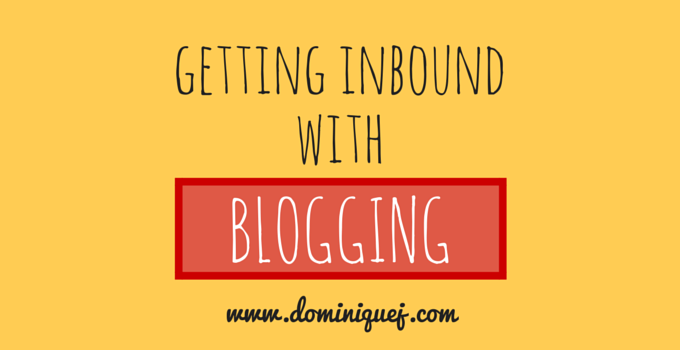
Getting Inbound With Blogging
I can’t help but face palm every time I come across a company blog that’s filled with promotional content. Every post is about a new product launch, a sale, a testimonial of someone praising their product, or some other nonsense that’s all about the company. It’s been proven countless times that self-promotional blogging should be kept to an absolute minimum.
Just like social media, people don’t come to your blog to read about your latest products. The blogs that get read the most are the ones that teach your audience something or entertains them. Or a mixture of both. The point is, if you’re getting more out of your blog than your audience, there’s a problem.
[Tweet “If you’re getting more from your blog posts than your audience, there’s a problem! #bloggingtips”]
So what should your blog posts consist of? Here are some quick suggestions:
- How to articles related to your industry – example
- Industry news with YOUR commentary and input – example
- Entertainment – example
- Answers to frequently asked questions – example
- Guides & tips – example
- Reviews – example
Basically, anything that a potential would find helpful. If you need help finding blog post ideas, give this post a read. Remember, you can mix up your blog with videos, graphics, audio and other types of content if you don’t want to write a bunch of articles. As long as the content you’re creating is focused on the needs of your audience, that’s what matters most.
Getting Inbound With Email Marketing
Don’t even get me started on the ridiculousness that goes on with promotional emails. Marketers went so crazy with email advertising that email clients had to create SPAM folders, the government had to get involved, and new companies were born. Despite all of that, people still keep on sending out that SPAM and endless streams of promotional emails like nobody’s business.
Emails are different from social and blogging, because marketers think that since the person opted in to receive emails from them, that gives them carte blanche to flood your inbox with promotional emails. The reason some companies send so many emails out is because they focus on quantity, rather than quality. It’s a numbers game. Instead of taking the time to create a valuable piece of content and email it to you, it’s much easier to blast out a bunch of emails offering 10% off, or letting you know about their latest promotion. Don’t be like these companies.
Email marketing is powerful when used correctly. One of my favorite examples of a company that does email marketing the right way is Trulia. Trulia is a site that lets your search for homes to rent or buy. They’re actually a great example of a company that does great online marketing in general, not just email.
I subscribed to Trulia when looking for my current apartment. Now that I got the apartment, moved in, and I’m not really their target market (people looking for an apartment), I should probably unsubscribe to their newsletter right? The reason I don’t, is because Trulia sends out helpful emails that have tips for renters and homeowners. Here are some examples of the headlines from their emails:
- Declutter your debt (Rent 101)
- Save on utilities by going green
- Is renter’s insurance worth the money?
- 5 ways to negotiate cheaper rent
By consistently sending out emails with content that’s helpful for people who have rented an apartment, they’re able to stay in the back of my mind, and more importantly, keep me subscribed. Even though I’m not currently looking for a new home, when the time comes, you can bet your behind that Trulia will be my first stop. Why? Because I’ve been reading their emails, and have built a connection in my mind between them and the task of apartment/home shopping. That’s the power of email marketing done right.
On the other end of the spectrum, let’s take a company who’s email I had to unsubscribe from because all they did was send me promotional emails. I won’t mention any names, but let’s just say it rhymes with Credible Prarrangements. Now I subscribed to their email list when I bought one thing from them. Here’s some examples of the headlines from their emails:
- We’ve got a surprise just for you!
- Ends tonight! 16% off sitewide
- Best sale ever!
- Last chance! Free delivery
- Free delivery on any $50+ purchase
What’s worse is these emails usually come in 1-2 days apart. This is not what people want to see in their inbox. In fact, these are the types of emails that find their way into the SPAM folder, and lead to unsubscribes. Not only that, but it just reeks of desperation. It’s like they’re screaming “Please come back and buy more from us! Please!!!!!”
Now that I’ve unsubscribed from them, I’ve essentially fell out of their funnel. Now, had they taken an approach similar to Trulia and sent out helpful emails with valuable content, with an occasional promotional email on holidays, I probably would have stayed subscribed. See the difference?
Moral Of The Story, Put Your Audience First
With all three of the areas I went over, you probably noticed an overarching theme of making your audience the star of the show, and really catering to their needs. Whether it’s the content you post to social media, on your blog, or send to email subscribers, it needs to provide value to your audience.
When you focus on giving value first, the customers and sales will start to come. Always remember, content isn’t about you, it’s about your audience.
